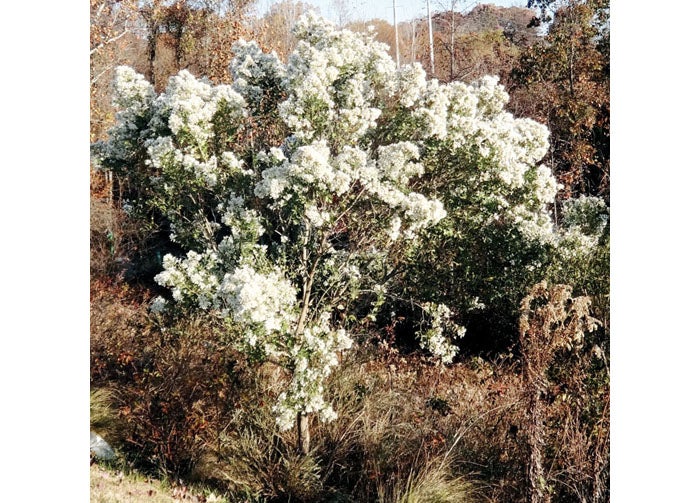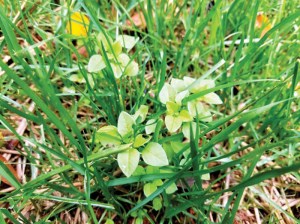Home and garden Q&A: Roots, weeds and shrubs
Published 12:00 am Sunday, November 15, 2020

- Silverling tree
We’ve had a few days with cool mornings, but our weather seems more like early May than November. Many are working outdoors with ongoing gardening and landscaping chores. Here are some questions posed that may be of relevance to your gardening situation.
Question: We have a large maple tree with big roots spread out seemly on top of the ground. The exposed roots are ugly and it is difficult to mow with the exposed roots. Can I cut them off level to the ground?
Answer: It’s important to avoid any type of damage to your tree’s the root system. Open wounds, especially on or near the soil surface provide an easy access to fungi and bacterial diseases which could infect and eventually kill the tree. Adding a layer of mulch to the area to avoid mowing is most likely your best option.
Question: With the warm weather, I already have winter weeds such as henbit and chickweed emerging in my newly seeded lawn. Can I apply a herbicide to kill winter weeds now and not hurt my newly established lawn?
Answer: Yes, but be sure your lawn is well established. If it has been mowed at least three times, it can withstand a postemergence herbicide application. Hose on applications broadleaf weed killers work well on early emerging, tender winter weeds.
Question: There are a small trees or shrubs blooming now along sides of the road with small, fluffy, white flowers. What type of plant is this and can you buy them?
Answer: The plant you have described is a silverling shrub/tree (Baccharis halimifolia). These plants often form dense thickets in open areas along roadways or abandoned fields. The plant is considered a trash tree of no economic or aesthetic value for most landscapes and has also been placed on the watch list as a possible invasive species. But the outcast native does have a redeeming value as a salt-tolerant hedge or screen in coastal or flooded areas. It has been successfully used in difficult areas as a small specimen tree or as a shrub border. From a distance, the plant does possess aesthetic value, especially in the fall. If you have livestock, remove it from your pastures. The shrub is one of our most dangerous to cattle, ponies, poultry, and sheep. Death occurs when these animals eat large quantities of the plant.
Darrell Blackwelder is the retired horticulture agent and director with the North Carolina Cooperative Extension Service in Rowan County. Contact him at deblackw@ncsu.edu .




